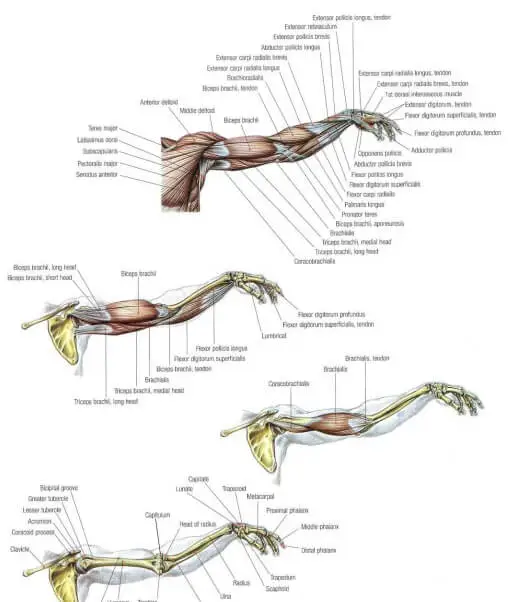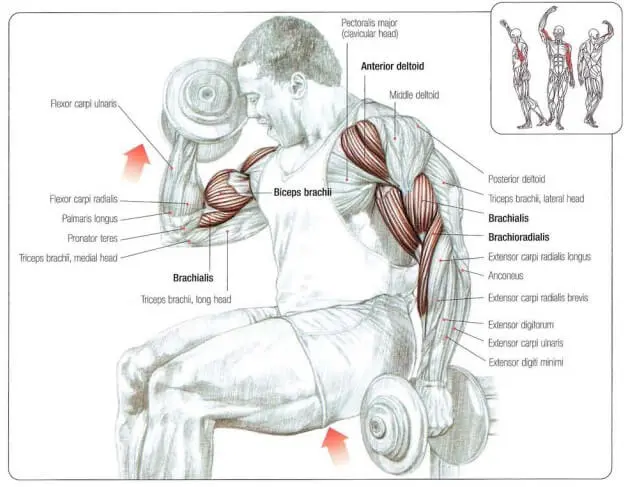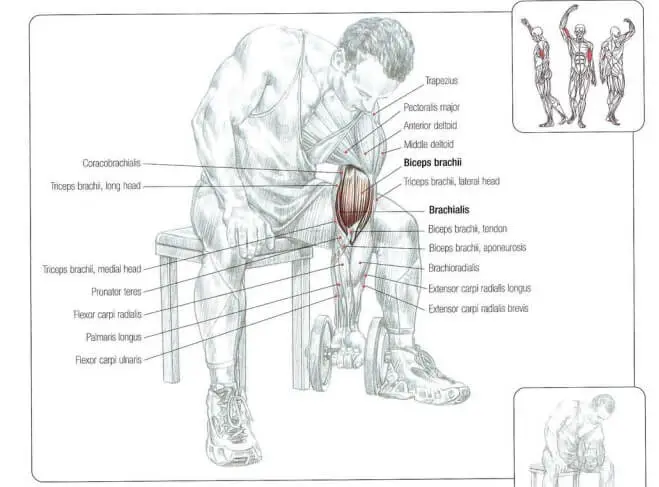Introduction to Strength Training Anatomy
If you’ve ever wondered what your muscles are doing while you lift weights, “Strength Training Anatomy” by Frédéric Delavier is the visual masterpiece you didn’t know you needed. This isn’t just a book—it’s a roadmap into your body’s inner workings during resistance training.
| Name of PDF | Strength Training Anatomy PDF |
|---|---|
| No Pages | 151 |
| Author | Frederic Delavier |
| Originally Published | 2005 |
| Language | English |
| Genres | Health and Fitness (Books) |
| Size | 21.91 MB |
| Check the latest edition |
Applying Quality Management in Healthcare PDF
Table of Contents

Who is Frederic Delavier?
Frédéric Delavier isn’t your average fitness guru. He’s a former powerlifting champion, an expert in biomechanics, and—wait for it—a professional artist with a background in human anatomy. That’s a rare combo. His expertise gives the book a unique mix of art and science that few other fitness books can match.
Why “Strength Training Anatomy” is a Game Changer
Unlike traditional gym guides, this book doesn’t just tell you how to do exercises—it shows you. It bridges the gap between doing a movement and understanding what that movement does to your body. Think of it as having X-ray vision while working out.
Deep Dive into the Book’s Structure
Visual Appeal – Why the Illustrations Stand Out
One word: stunning. Delavier’s hand-drawn illustrations highlight the primary and secondary muscles involved in each exercise. These aren’t generic stick figures—they’re detailed, colorful, and incredibly lifelike.
Organized by Muscle Groups
The book is smartly split into sections, so you can jump straight to the muscle group you want to train.
Chest
From the classic bench press to cable crossovers, the illustrations show pec major and minor in action, guiding your form and movement precision.
Back
Whether it’s rows or pull-ups, you’ll learn how lats, traps, and rhomboids activate during pulling exercises.
Arms
Biceps curls and triceps extensions become more than just movements—you’ll understand what each variation targets.
Shoulders
Overhead presses and lateral raises show how the deltoid’s three heads play different roles.
Legs
From squats to lunges, you’ll see quads, hamstrings, and glutes light up on the page.
Core
It’s not just crunches—obliques, transverse abdominis, and rectus abdominis are all broken down clearly.
Exercise Descriptions and Execution
Each exercise comes with detailed descriptions that explain proper form, breathing, range of motion, and common mistakes. It’s like having a personal trainer on every page.
Safety First—Injury Prevention Tips
The book emphasizes how not to get hurt, showing you the right way to perform exercises and what common form flaws to avoid. It even flags exercises that could strain your joints if not done right.

Understanding Anatomy Through Training
How Anatomy Impacts Your Training
Knowing what muscles you’re working helps you train smarter, not just harder. Delavier teaches you to feel the muscle, not just move the weight.
Identifying and Targeting Specific Muscles
Struggling to grow a certain muscle? This book helps you pinpoint where you might be going wrong.
The Role of Connective Tissue and Joint Mechanics
The book explains the science of movement—how tendons, ligaments, and joints work together. Understanding this means fewer injuries and more gains.
Practical Applications for Athletes and Lifters
Beginners vs Advanced Lifters
Whether you’re new to lifting or a seasoned pro, this book meets you where you are. Beginners get form basics, while advanced lifters can refine technique and target weak spots.
Customizing Your Training Plan
Want to build a bigger chest? Improve deadlift form? The book helps you design workouts that target your unique goals.
Fixing Imbalances and Weak Points
You’ll learn how to spot and correct muscular imbalances that could lead to plateaus or injuries.
Strength Training Meets Science
The Blend of Biomechanics and Training
Delavier doesn’t just show you muscles—he explains how bones, joints, and levers affect your range of motion and strength.
Neuromuscular Connection—Why It Matters
Mind-muscle connection isn’t just bro-science. This book shows you how improving it can lead to better gains and more effective workouts.
Real-World Use Cases
How Personal Trainers Use the Book
Many trainers keep this book as a desk reference. It’s perfect for explaining exercises to clients in a visual and easy-to-understand way.
Application in Physical Therapy and Rehab
Therapists use it to explain mechanics and tailor rehab exercises, especially when targeting specific muscle recovery.
Bodybuilding and Aesthetic Training
Bodybuilders love it for its ability to help them sculpt each muscle like an artist chiseling a statue—fitting, since Delavier is literally both.
Critique and Limitations
What Could Be Improved?
While the illustrations are top-tier, some readers may wish for video content or a companion app to see exercises in motion. And it’s not heavy on workout programming or nutrition.
Who Might Not Benefit from the Book?
If you’re looking for a cookie-cutter workout plan or diet advice, this book won’t be your jam. It’s more of an educational guide than a full training system.
Conclusion
“Strength Training Anatomy” is more than just a pretty book—it’s a functional tool that belongs in the hands of every serious lifter. Whether you’re lifting for size, strength, or recovery, Delavier’s masterwork brings clarity and confidence to your workouts. Want to train smarter, avoid injuries, and know exactly what’s happening under your skin with every rep? This book is your must-have gym companion.

FAQs about Strength Training Anatomy PDF
What’s the difference between “Strength Training Anatomy” and other fitness books?
Most fitness books tell you what to do. This book shows you how and why with anatomical visuals and explanations that take your understanding to the next level.
Is the book beginner-friendly?
Absolutely. It’s clear, visual, and easy to follow, even for those new to lifting. You’ll learn the right form and how your body should move.
How can I use this book for home workouts?
Many exercises require minimal equipment or can be adapted. The book helps you understand body mechanics, even if you’re just using dumbbells or resistance bands.
Does it include nutrition advice?
Nope. This book focuses purely on anatomy and training. For nutrition, you’ll want a separate resource.
Is there a digital version of the book?
Yes, it’s available as an eBook and sometimes as part of fitness apps or digital libraries. Check major platforms like Kindle or Google Books.
What is the summary of strength training anatomy?
A comprehensive guide to strength training that provides detailed illustrations of the muscles used in each exercise
What is strength in anatomy?
The ability of a muscle or group of muscles to generate muscular force under specific resistive conditions





